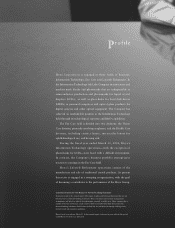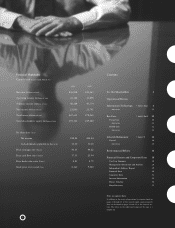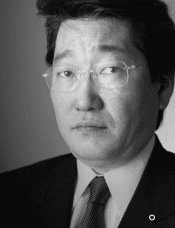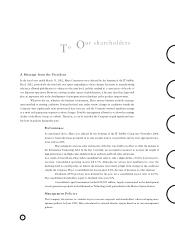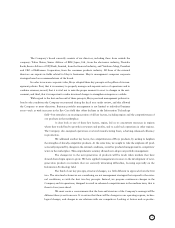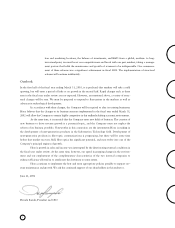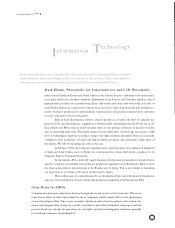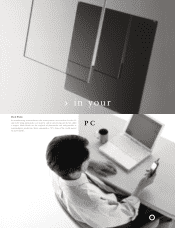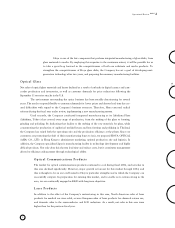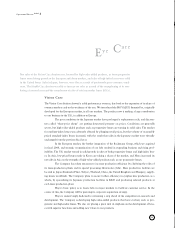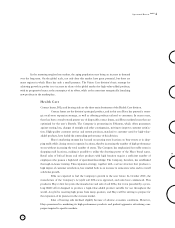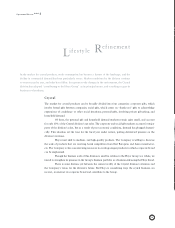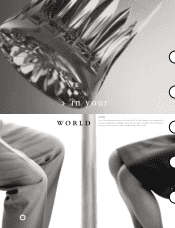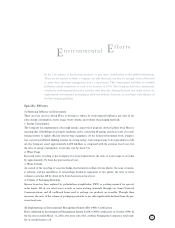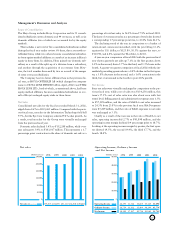Pentax 2002 Annual Report Download - page 12
Download and view the complete annual report
Please find page 12 of the 2002 Pentax annual report below. You can navigate through the pages in the report by either clicking on the pages listed below, or by using the keyword search tool below to find specific information within the annual report.
Net sales of the Vision Care division rose, boosted by high-value-added products, as focus-progressive
lenses were driving growth in the European and Asian markets, and sales of high-index lenses were solid
in the United States. Sales in Japan, however, were flat as a result of persistently poor economic condi-
tions. The Health Care division was able to increase net sales as a result of the strengthening of its mar-
keting of contact lenses and the contribution of sales of soft intraocular lenses (IOLs).
Vision Care
The Vision Care division showed a solid performance overseas, due both to the expansion of its share of
overseas markets and to the weakness of the yen. We introduced the HOYALUX Summit Pro, originally
developed for the European market, in all our markets. The product now is making a large contribution
to our business in the U.S., in addition to Europe.
The poor conditions in the Japanese market have prolonged a replacement cycle, and discoun-
ters called “three-price shops” are putting downward pressure on prices. Conditions are generally
severe, but high-value-added products such as progressive lenses are turning in solid sales. The market
for medium-index lenses was adversely affected by plunging retail prices, but the volume of reasonably
priced standard-index lenses increased, with the result that sales in the Japanese market were virtually
unchanged from the previous fiscal year.
In the European market, the further integration of the Buchmann Group, which we acquired
in fiscal 2000, and strategic reorganization of our labs resulted in expanding business and rising prof-
itability. The U.S. market turned in solid growth in sales of both progressive lenses and high-index lens-
es. In Asia, low-priced lenses made in Korea are taking a share of the market, and Hoya increased its
net sales in Asia on the strength of high-value-added products such as our progressive lenses.
The Company has taken measures to increase production efficiency by clarifying the roles of
its mass-production plants and its special processing laboratories (labs). Mass production facilities are
located in Japan (Itsukaichi Plant, Tokyo), Thailand, China, the United Kingdom and Hungary, supply-
ing lenses worldwide. The Company plans to secure further efficiency in eyeglass lens production as a
whole, by specializing its Japanese production facilities in R&D and producing selected products at
each mass production plant.
Hoya’s basic policy is to locate labs in major markets to facilitate customer service. In the
course of this, the Company will be pursuing its corporate acquisition strategy.
Hoya is unswervingly dedicated to remaining a step ahead of the competition in research and
development. The Company is developing high-value-added products that have evolved, such as pro-
gressive and high-index lenses. We also are placing a great deal of emphasis on the development of lens-
es with superior functions and adding new values to our products.
10
Eye Care
Operational Review part 3


